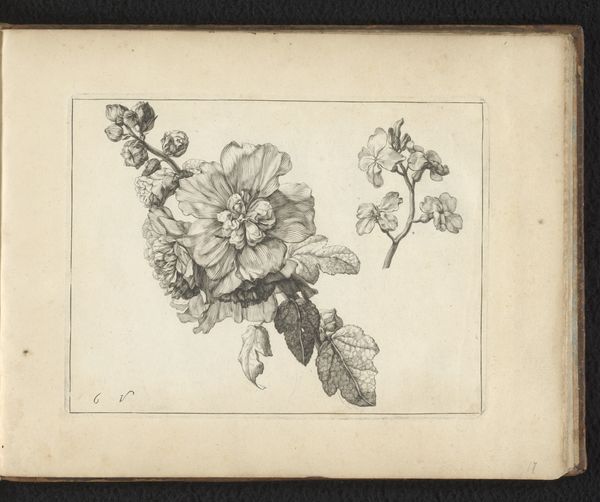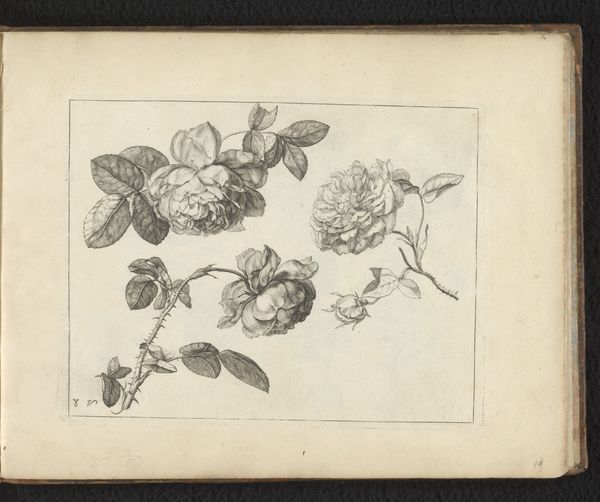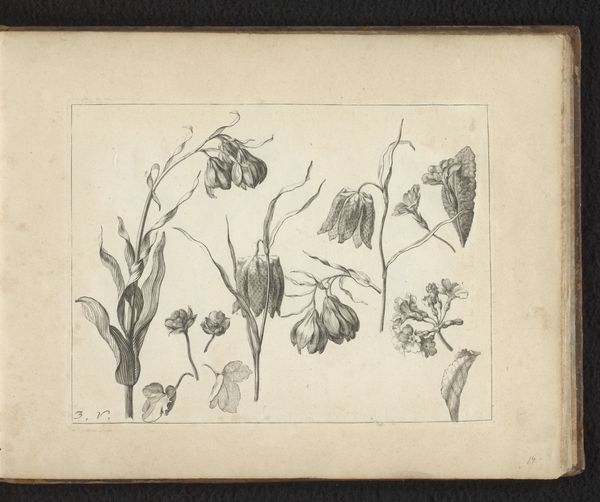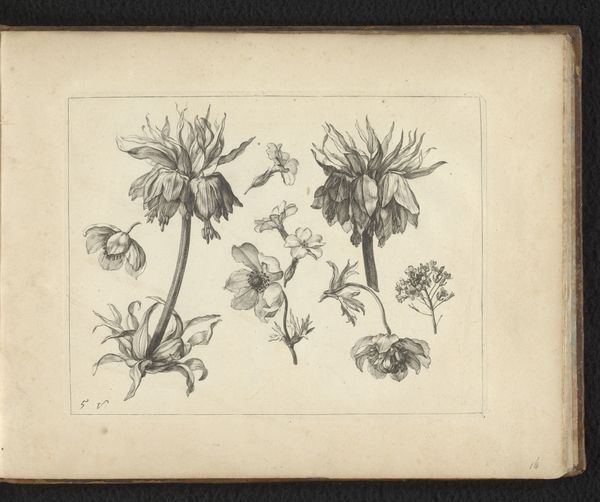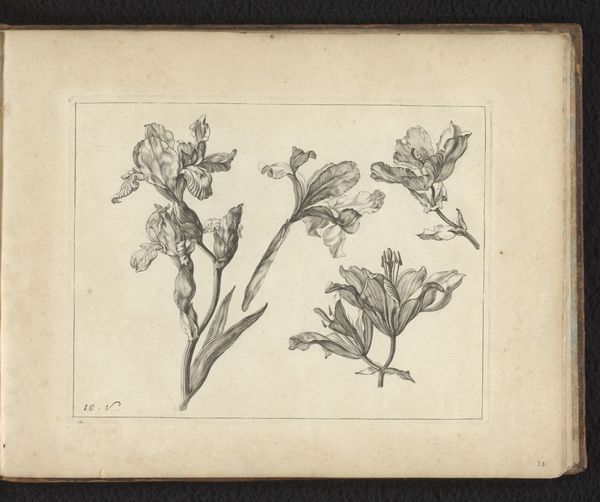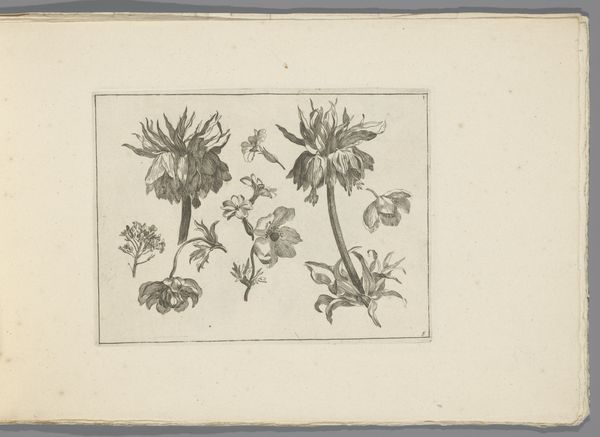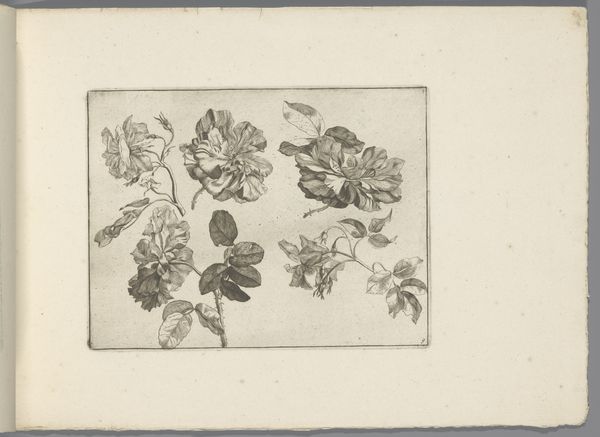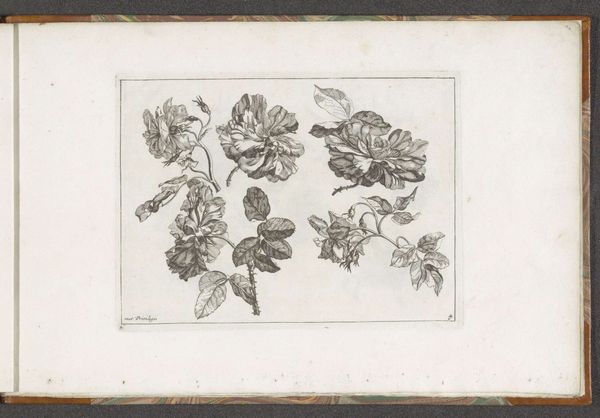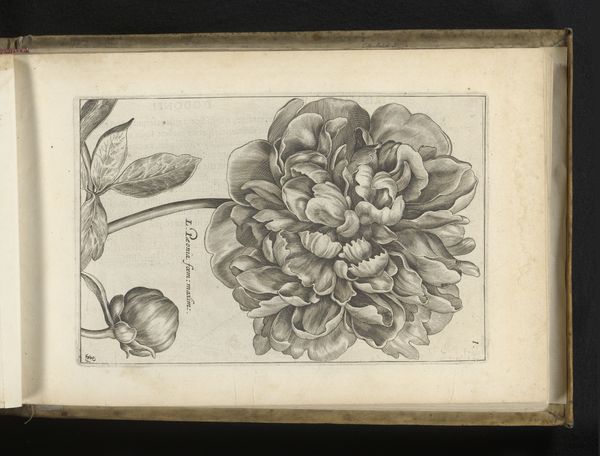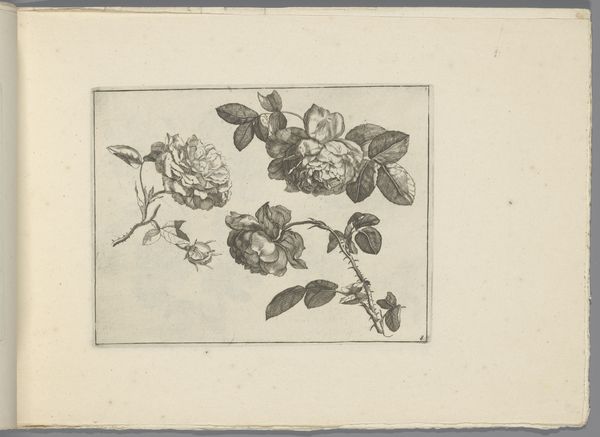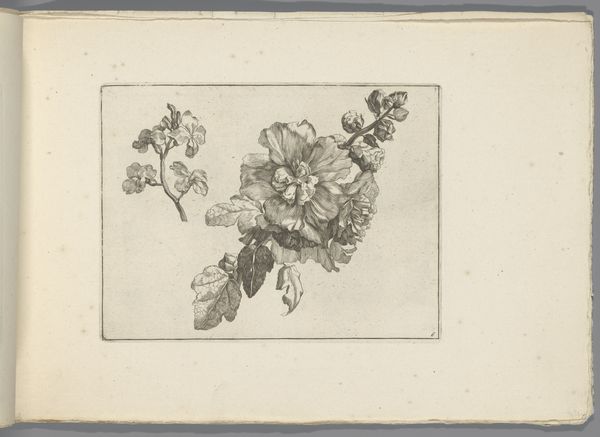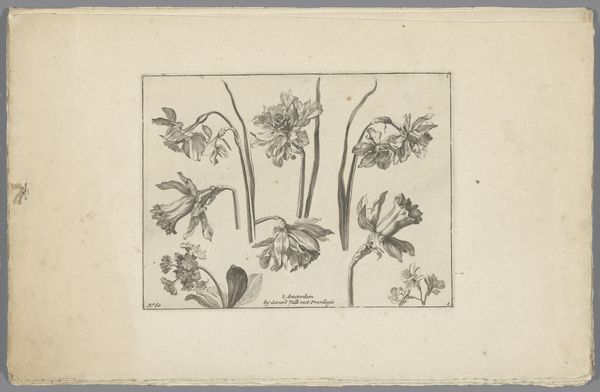
drawing, paper, ink
#
drawing
#
toned paper
#
dutch-golden-age
#
paper
#
personal sketchbook
#
ink
#
pen-ink sketch
#
pen and pencil
#
pen work
#
sketchbook drawing
#
watercolour illustration
#
sketchbook art
#
pencil art
#
watercolor
Dimensions: height 137 mm, width 177 mm
Copyright: Rijks Museum: Open Domain
Editor: Here we have, from the Rijksmuseum, an anonymous drawing from circa 1650-1676 titled "Bloeiwijze van een rozensoort," or "Rose flowering." It's done with pen and ink on paper, and looks like a page torn straight from a personal sketchbook. I'm immediately drawn to the artist's confident lines; it really captures the ephemeral beauty of the roses. What stands out to you in this piece? Curator: The distribution of forms upon the page is quite striking. Notice how the artist, through the precise articulation of line and tonal variation achieved with ink, has rendered each rose bloom as a distinct study, almost scientifically observed, yet presented in a non-hierarchical, informal arrangement. How does this interplay of precision and informality affect your perception? Editor: I think the lack of formal composition creates a sense of intimacy, like you’re peering into the artist’s private observations. Each rose seems to be given equal attention, but displayed informally on the page, like separate but equally intriguing entities, captured from multiple perspectives. Curator: Precisely. Observe, too, the delicate hatching employed to suggest volume and texture. The artist uses the linear quality of ink to create an illusion of depth on a two-dimensional surface, emphasizing the texture inherent in botanical specimens. Are you able to perceive a structural distinction in rendering various roses across the piece? Editor: Yes, it’s subtle, but some blooms appear more tightly rendered, the petals almost overlapping aggressively to create form, while others seem more open, almost translucent. It's intriguing how much the varying rendering styles add nuance. Curator: Indeed. It prompts one to consider the work as a study in representation itself. The image challenges us to consider how formal artistic choices enhance the viewing experience of what might otherwise be a commonplace, straightforward rendering of common floral specimens. Editor: I hadn't thought of it that way! The arrangement and style really elevate it beyond a simple botanical study. Thanks for showing me the depth and care that I hadn't immediately recognised within those lines! Curator: It's been a pleasure. Remember to always look beneath the surface, and challenge how you think about fundamental aspects such as drawing and composition.
Comments
No comments
Be the first to comment and join the conversation on the ultimate creative platform.

